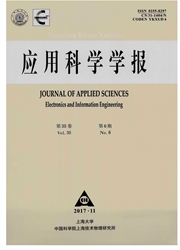

 中文摘要:
中文摘要:
讨论了压缩感知理论用于图像稀疏重建的基本流程.采用正交匹配追踪重建算法和正交归一化的随机高斯测量矩阵,对离散余弦变换和离散小波变换两种稀疏表示算法进行分析比较,通过调节实验图像的分块大小和采样率大小、采样率和稀疏表示算法对重构效果和效率的影响.在图像的稀疏表示方面,离散余弦变换整体上比离散小波变换性能更好.为了在重构效果与效率之间取得平衡,需要合理选择分块大小和采样率。
 英文摘要:
英文摘要:
Application of compressed sensing to sparse reconstruction of image is discussed. An orthogonal matching pursuit algorithm for reconstruction and Gaussian random matrix for measurement are used. We analyze and compare DCT and DWT both theoretically and experimentally. By adjusting the sub-block size and sampling rate of the experimental images, we make a comprehensive comparison of sub-block size, sampling rate and influences of the two algorithms on effectiveness and efficiency of sparse reconstruction in terms of runtime, reconstruction error and visual effects. In sparse image representation, DCT exhibits better overall performance than DWT. In order to achieve an optimal balance between reconstruction effectiveness and efficiency, a reasonable choice of sub-block size and sampling rate is required.
 同期刊论文项目
同期刊论文项目
 同项目期刊论文
同项目期刊论文
 期刊信息
期刊信息
